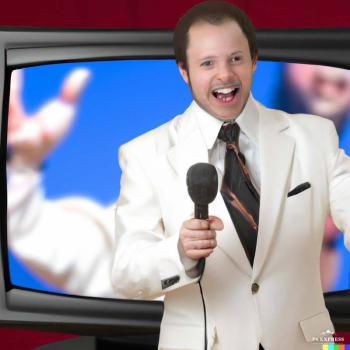“Black preaching” is stereotypically thought to be emotional, even cathartic, rhythmic, centered on suffering and celebration, and ultimately doctrinally shallow. “White preaching” is thought to be (stereotypically) largely the reverse: doctrinal, cold, intellectual, etc. . . At least that’s what you’d believe if you believe the cultural stereotypes.
And nothing, in my mind, has quite done as much damage to the people of God needing to live the culture of God like the false ways of viewing preaching. Too often we think of “black preaching” and “white preaching,” and by that we mean some standard or style of preaching that is acceptable in those human cultures. And attached to these general views of culture and preaching are certain norms for what we think is “good” preaching in each context. “Good” black preaching produces a whoop and a shout. “Good” white preaching produces . . . what? Knowledge? Emotional stiffness?
What does this do to our notion of preaching? It severs two essential aspects to good preaching: truth and passion. Good preaching, black or white or brown or yellow, is preaching the truth of the Scriptures with godly zeal . . . preaching the weighty doctrines of God with the weighty movements of the heart that accompany those doctrines. Now any individual preacher may have a different “emotional range” or “doctrinal range” to work with, but both those things go together in good preaching.
The practical effect of maintaining this human cultural distinctive where preaching is concerned is that large segments of the family of God are cut off from significant aspects to good preaching. Some are shaped into emotionally boisterous and doctrinally shallow Christians, while others are doctrinally heady and emotionally paralyzed. In the culture of God, we need truth set on fire so that we might be both rooted and grounded in the truth and stirred to compassion, love, and zeal . . .
Here’s a place for great exchange among the people of God for the glory of God. Perhaps some African-American preachers could learn a great deal from some of their white brothers in making their preaching more doctrinally rich and in adopting an expository discipline in the pulpit. And perhaps some white preachers could learn a great deal from some of their African-American brothers about preaching with passion and urgency and seeing and celebrating the application of truth to the real human struggles sitting in their congregations.”
This continues our series on preaching, which is based on the fourth article of the Together for the Gospel Statement. The previous post in this series warned of some of the dangers of expository preaching.
I found this fantastic quote from the pen of Thabiti Anyabwile over at Pure Church describing what preachers who are stereotypically black and those who are stereotypically white MUST learn from each other:












